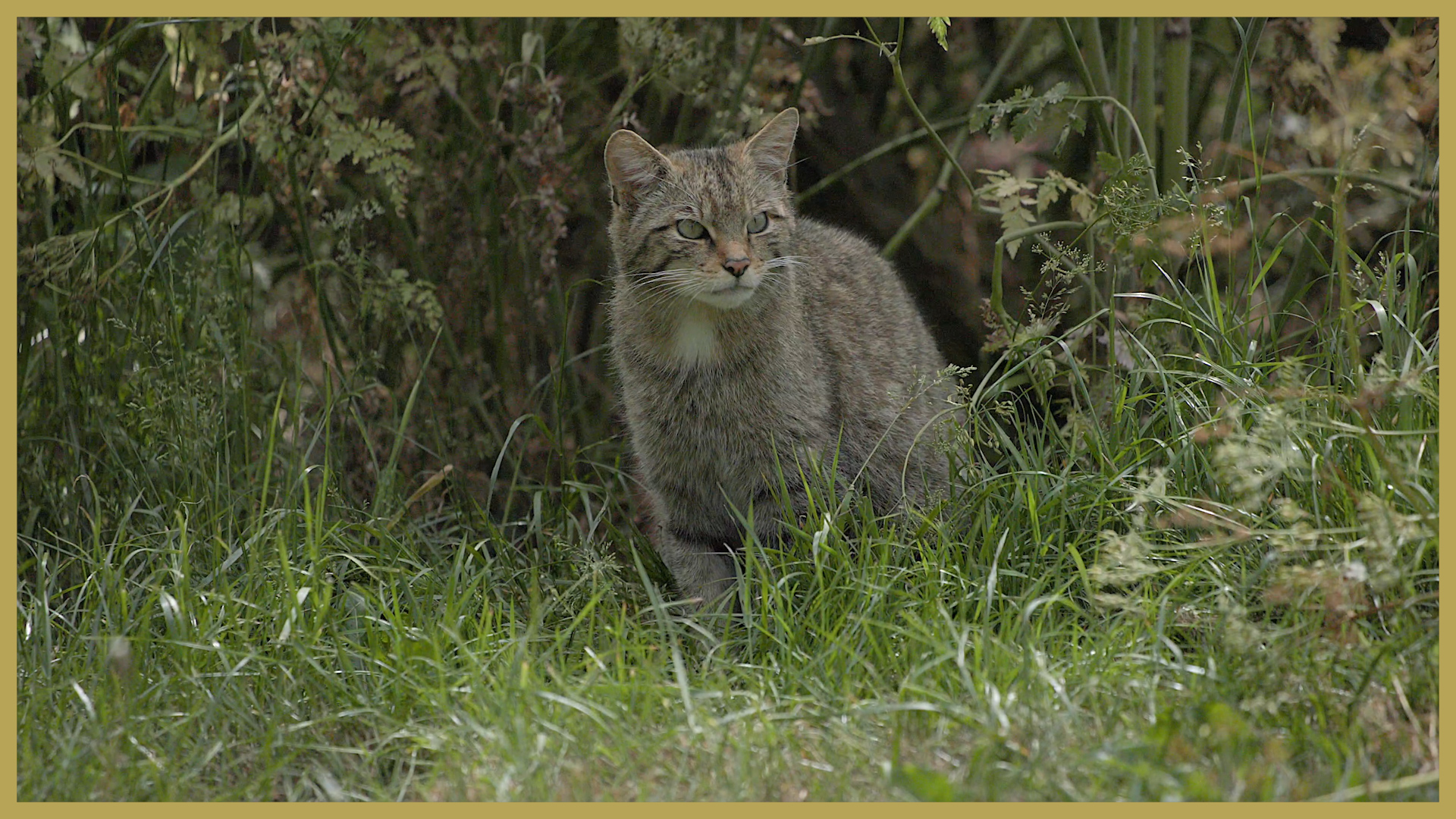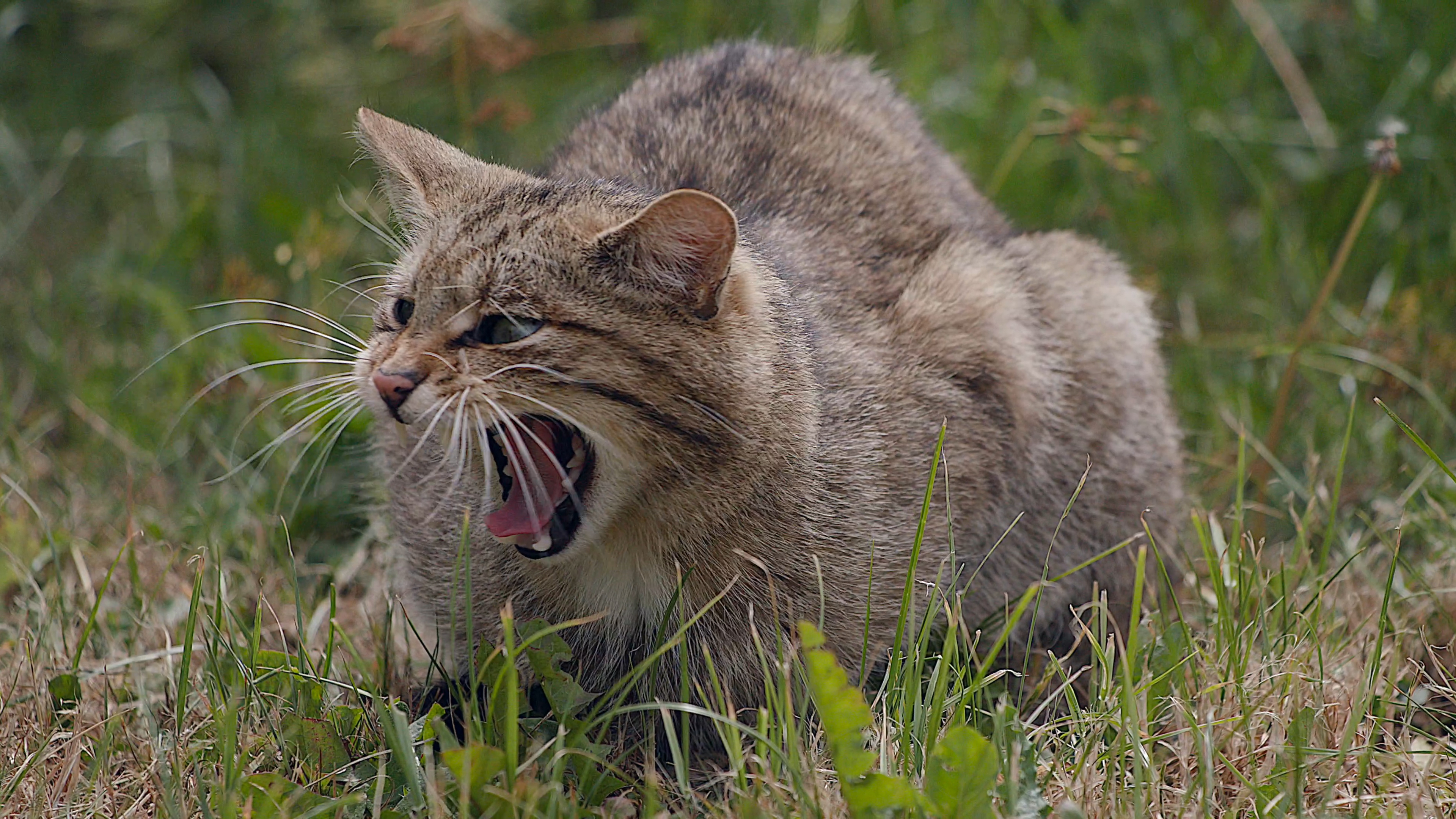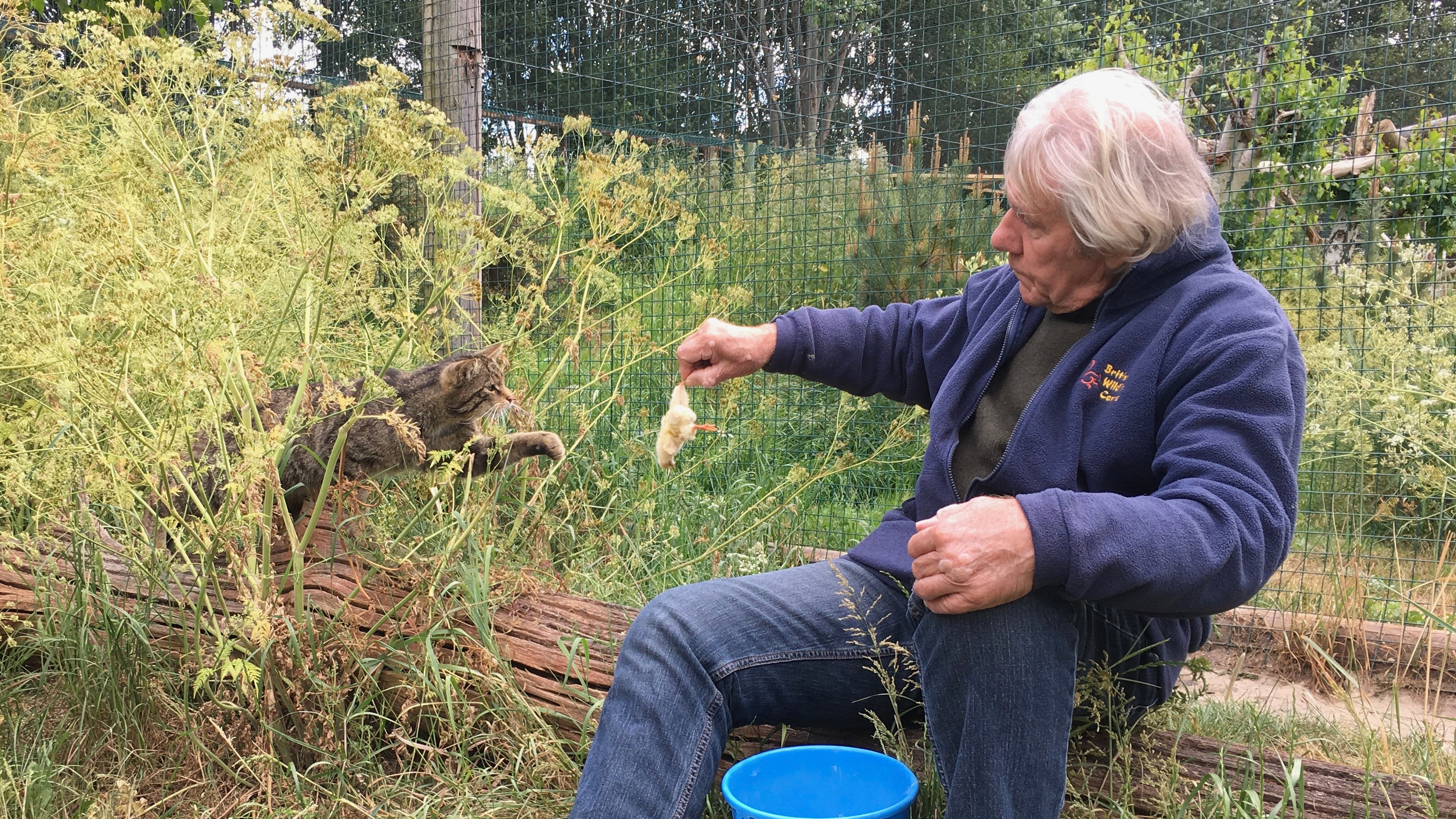03:29

The Scottish wildcat is a rare beast. No one knows exactly how many of these shy, secretive creatures roam the Scottish Highlands, although some estimate there could be fewer than 50, but certainly not more than a few hundred.
Scottish wildcats – originally European wildcats – have existed since the Ice Age and were once a common sight in the British countryside and across Europe. However, over time they have been hunted to the verge of extinction.
The elusive Scottish wildcat, affectionately known as the Highland Tiger, is slightly larger than a domestic cat, with distinctive unbroken tiger stripes across its back, black rings on its thick tail and sharp, green eyes.

Scottish wildcats may look like domestic cats, but they can't be tamed. /Kitty Logan/CGTN
Scottish wildcats may look like domestic cats, but they can't be tamed. /Kitty Logan/CGTN
Despite a notoriously fierce and aloof nature, the biggest modern threat to the Scottish wildcat is the domesticated cat. With numbers critically low in the wild, male Scottish wildcats often seek out female feral cats to breed with, reducing the number of genuine wildcat genes.
The British Wildlife Centre has been running a dedicated Scottish wildcat breeding program for the past 20 years, with the aim of boosting numbers. The center's owner and founder, David Mills, says he is hopeful the species can be saved. The key is to keep breeding the pure wildcats. "All ours have been DNA tested," Mills said. "They're all 90 percent-plus Scottish wildcat, or European wildcat DNA. So, by breeding them, we can breed out the genes that shouldn't be there. Hopefully we should get them 95 percent pure. And they're the ones that will be going back out into the wild," he added.
The next problem is the transition from captivity to a natural environment. "They have to go into a period where they've got to be taught how to hunt, because they can't hunt in here, because there's no live prey," Mills said. Adding: "They've got to be taught how to be self-sufficient, so they go to a facility where they will be given prey that looks like it's wild, then they will not have any contact with human beings."

David Mills feeds the wildcats prey that looks like it's wild to help the wildcats transition from captivity to the wild. /Kitty Logan/CGTN
David Mills feeds the wildcats prey that looks like it's wild to help the wildcats transition from captivity to the wild. /Kitty Logan/CGTN
Scottish wildcats only have one litter of two to three kittens each year, so the process of increasing numbers is painfully slow. But as part of a wider action plan for the Scottish wildcat, the Royal Zoological Society of Scotland also runs a breeding and reintroduction center with the same aim of raising pure Scottish wildcats and returning them to their natural environment.
There is no guarantee of success, but a similar project in Germany has seen numbers of wildcats increase over a wide area. The hope is that one day in the future, we might even see the Scottish wildcat on the prowl in the English countryside again.
Cover photo: Dan Cawthorne
Video editor: Pedro Duarte
Additional footage: Royal Zoological Society of Scotland
With thanks to Scottish Wildcat Action for their advice and information.